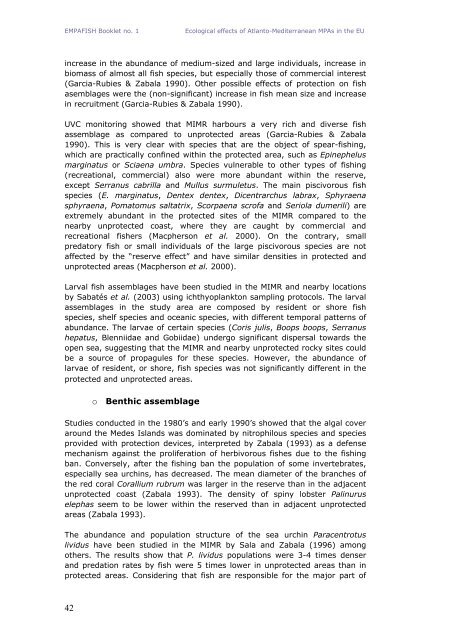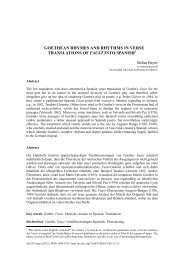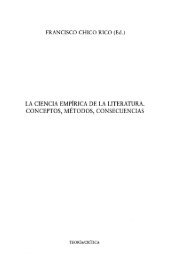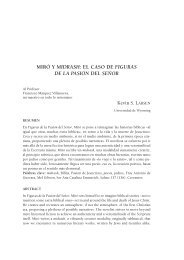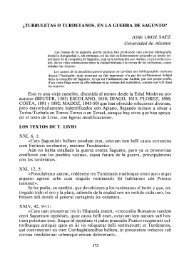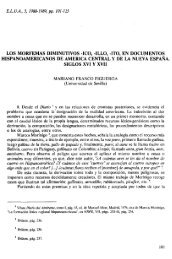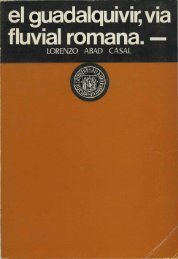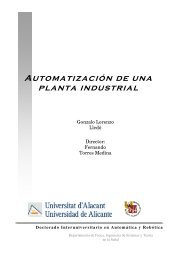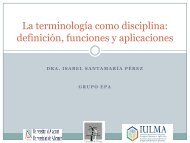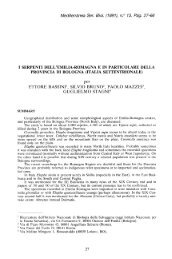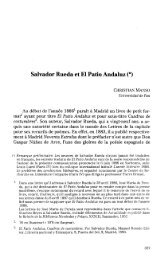ecological effects of marine protected areas empafish project ...
ecological effects of marine protected areas empafish project ...
ecological effects of marine protected areas empafish project ...
You also want an ePaper? Increase the reach of your titles
YUMPU automatically turns print PDFs into web optimized ePapers that Google loves.
EMPAFISH Booklet no. 1 Ecological <strong>effects</strong> <strong>of</strong> Atlanto-Mediterranean MPAs in the EU<br />
increase in the abundance <strong>of</strong> medium-sized and large individuals, increase in<br />
biomass <strong>of</strong> almost all fish species, but especially those <strong>of</strong> commercial interest<br />
(Garcia-Rubies & Zabala 1990). Other possible <strong>effects</strong> <strong>of</strong> protection on fish<br />
asemblages were the (non-significant) increase in fish mean size and increase<br />
in recruitment (Garcia-Rubies & Zabala 1990).<br />
UVC monitoring showed that MIMR harbours a very rich and diverse fish<br />
assemblage as compared to un<strong>protected</strong> <strong>areas</strong> (Garcia-Rubies & Zabala<br />
1990). This is very clear with species that are the object <strong>of</strong> spear-fishing,<br />
which are practically confined within the <strong>protected</strong> area, such as Epinephelus<br />
marginatus or Sciaena umbra. Species vulnerable to other types <strong>of</strong> fishing<br />
(recreational, commercial) also were more abundant within the reserve,<br />
except Serranus cabrilla and Mullus surmuletus. The main piscivorous fish<br />
species (E. marginatus, Dentex dentex, Dicentrarchus labrax, Sphyraena<br />
sphyraena, Pomatomus saltatrix, Scorpaena scr<strong>of</strong>a and Seriola dumerili) are<br />
extremely abundant in the <strong>protected</strong> sites <strong>of</strong> the MIMR compared to the<br />
nearby un<strong>protected</strong> coast, where they are caught by commercial and<br />
recreational fishers (Macpherson et al. 2000). On the contrary, small<br />
predatory fish or small individuals <strong>of</strong> the large piscivorous species are not<br />
affected by the “reserve effect” and have similar densities in <strong>protected</strong> and<br />
un<strong>protected</strong> <strong>areas</strong> (Macpherson et al. 2000).<br />
Larval fish assemblages have been studied in the MIMR and nearby locations<br />
by Sabatés et al. (2003) using ichthyoplankton sampling protocols. The larval<br />
assemblages in the study area are composed by resident or shore fish<br />
species, shelf species and oceanic species, with different temporal patterns <strong>of</strong><br />
abundance. The larvae <strong>of</strong> certain species (Coris julis, Boops boops, Serranus<br />
hepatus, Blenniidae and Gobiidae) undergo significant dispersal towards the<br />
open sea, suggesting that the MIMR and nearby un<strong>protected</strong> rocky sites could<br />
be a source <strong>of</strong> propagules for these species. However, the abundance <strong>of</strong><br />
larvae <strong>of</strong> resident, or shore, fish species was not significantly different in the<br />
<strong>protected</strong> and un<strong>protected</strong> <strong>areas</strong>.<br />
42<br />
o Benthic assemblage<br />
Studies conducted in the 1980’s and early 1990’s showed that the algal cover<br />
around the Medes Islands was dominated by nitrophilous species and species<br />
provided with protection devices, interpreted by Zabala (1993) as a defense<br />
mechanism against the proliferation <strong>of</strong> herbivorous fishes due to the fishing<br />
ban. Conversely, after the fishing ban the population <strong>of</strong> some invertebrates,<br />
especially sea urchins, has decreased. The mean diameter <strong>of</strong> the branches <strong>of</strong><br />
the red coral Corallium rubrum was larger in the reserve than in the adjacent<br />
un<strong>protected</strong> coast (Zabala 1993). The density <strong>of</strong> spiny lobster Palinurus<br />
elephas seem to be lower within the reserved than in adjacent un<strong>protected</strong><br />
<strong>areas</strong> (Zabala 1993).<br />
The abundance and population structure <strong>of</strong> the sea urchin Paracentrotus<br />
lividus have been studied in the MIMR by Sala and Zabala (1996) among<br />
others. The results show that P. lividus populations were 3-4 times denser<br />
and predation rates by fish were 5 times lower in un<strong>protected</strong> <strong>areas</strong> than in<br />
<strong>protected</strong> <strong>areas</strong>. Considering that fish are responsible for the major part <strong>of</strong>


